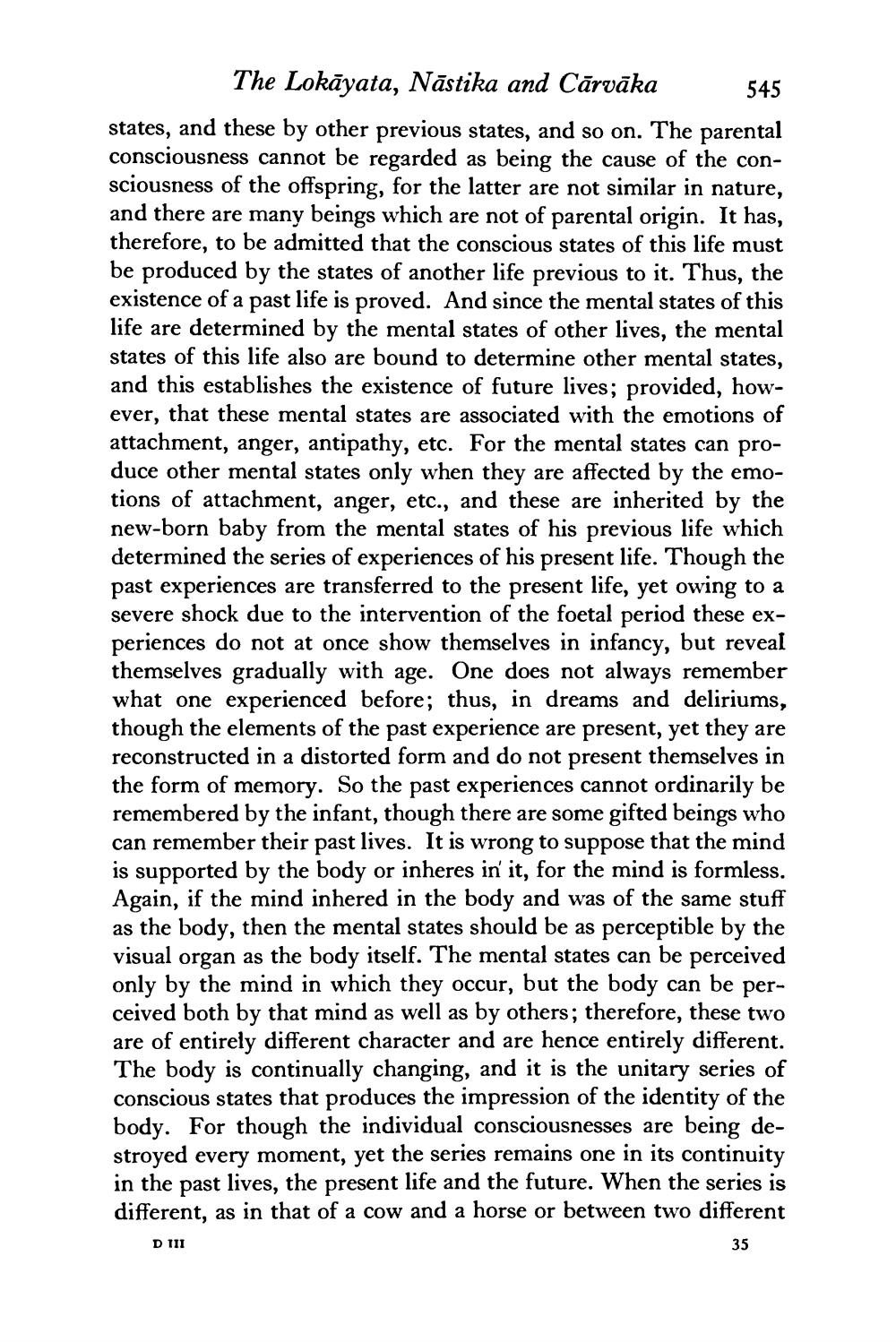________________
The Lokāyata, Nāstika and Cārvāka 545 states, and these by other previous states, and so on. The parental consciousness cannot be regarded as being the cause of the consciousness of the offspring, for the latter are not similar in nature, and there are many beings which are not of parental origin. It has, therefore, to be admitted that the conscious states of this life must be produced by the states of another life previous to it. Thus, the existence of a past life is proved. And since the mental states of this life are determined by the mental states of other lives, the mental states of this life also are bound to determine other mental states, and this establishes the existence of future lives; provided, however, that these mental states are associated with the emotions of attachment, anger, antipathy, etc. For the mental states can produce other mental states only when they are affected by the emotions of attachment, anger, etc., and these are inherited by the new-born baby from the mental states of his previous life which determined the series of experiences of his present life. Though the past experiences are transferred to the present life, yet owing to a severe shock due to the intervention of the foetal period these experiences do not at once show themselves in infancy, but reveal themselves gradually with age. One does not always remember what one experienced before; thus, in dreams and deliriums, though the elements of the past experience are present, yet they are reconstructed in a distorted form and do not present themselves in the form of memory. So the past experiences cannot ordinarily be remembered by the infant, though there are some gifted beings who can remember their past lives. It is wrong to suppose that the mind is supported by the body or inheres in it, for the mind is formless. Again, if the mind inhered in the body and was of the same stuff as the body, then the mental states should be as perceptible by the visual organ as the body itself. The mental states can be perceived only by the mind in which they occur, but the body can be perceived both by that mind as well as by others; therefore, these two are of entirely different character and are hence entirely different. The body is continually changing, and it is the unitary series of conscious states that produces the impression of the identity of the body. For though the individual consciousnesses are being destroyed every moment, yet the series remains one in its continuity in the past lives, the present life and the future. When the series is different, as in that of a cow and a horse or between two different
DIII
35




